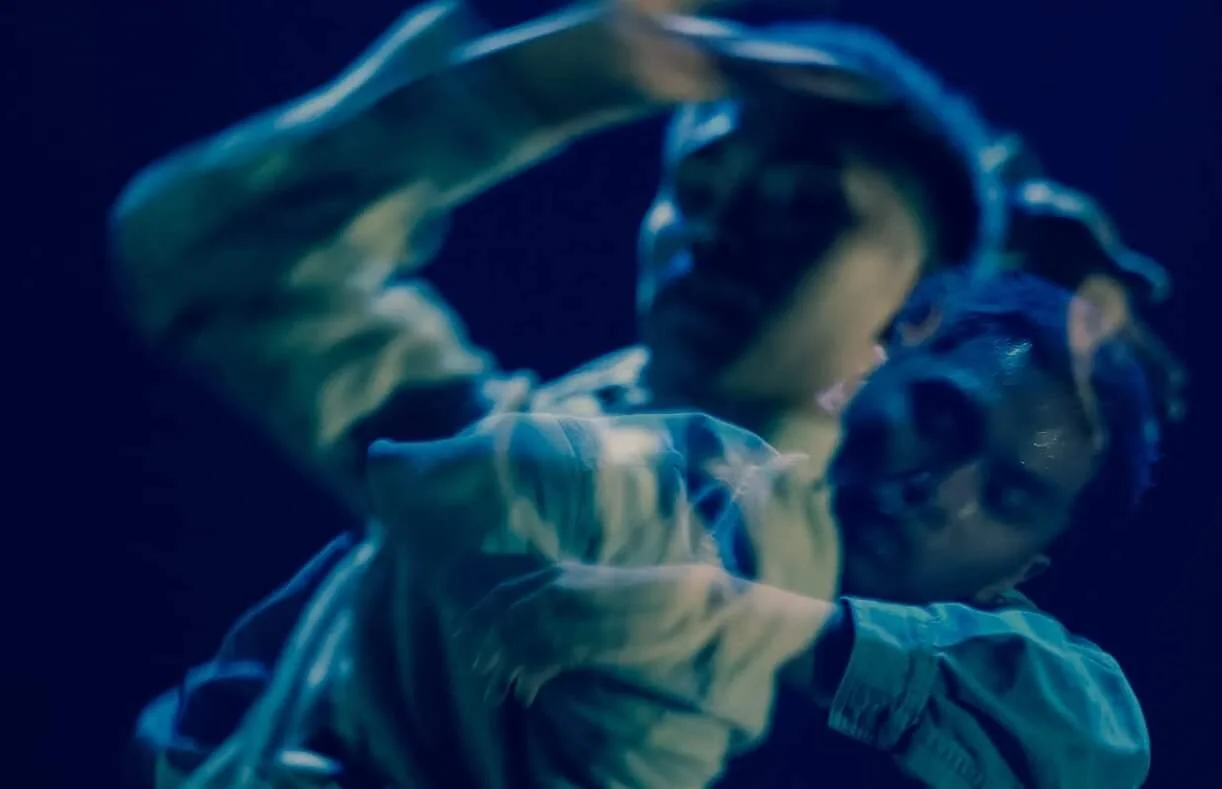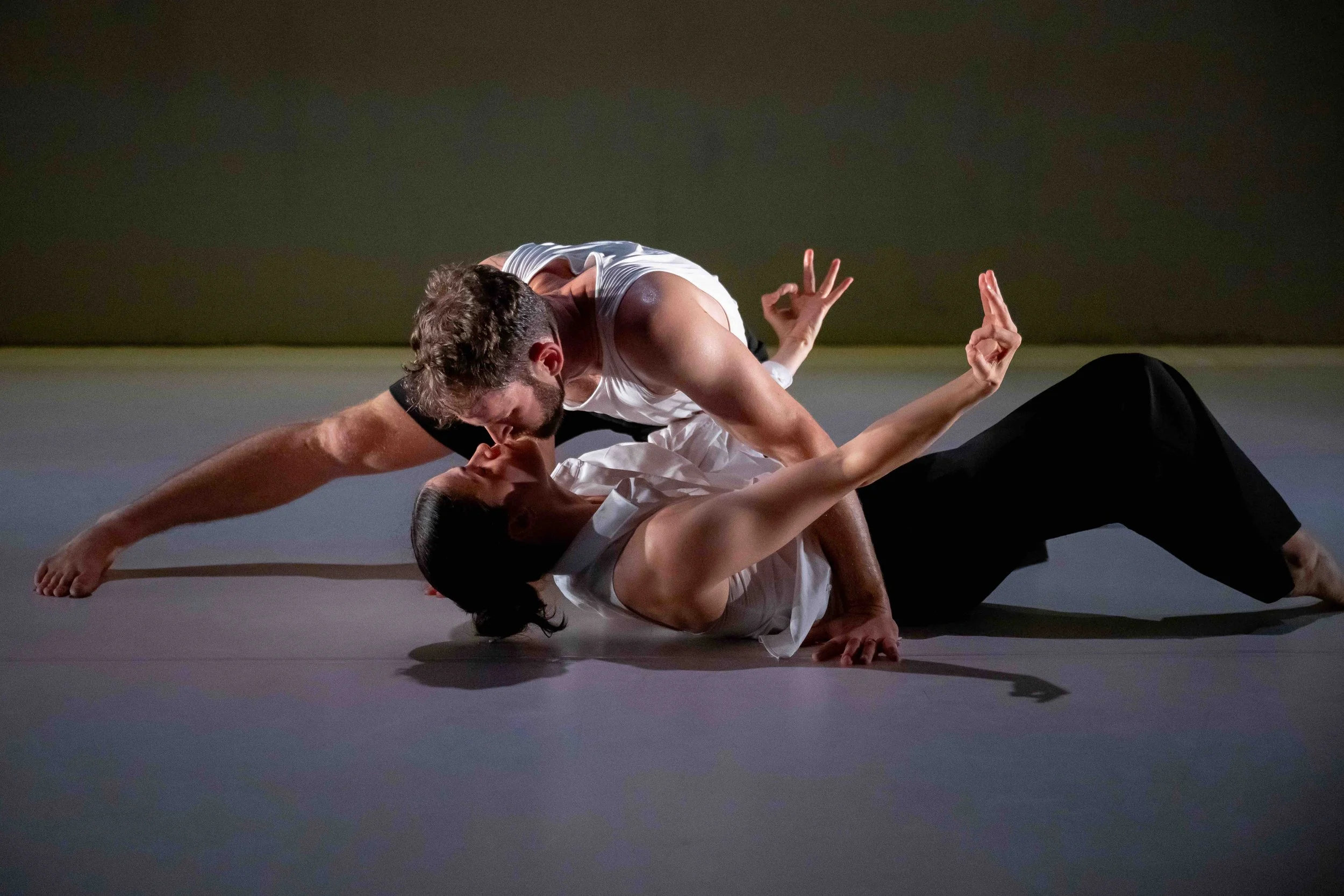Joshua Ongcol takes deep dive into identity and Tagalog in Lakbay, at Made in BC residency
Showcase presents culmination of Re-Centering/Margins program nurturing new BIPOC voices in dance
Joshua Ongcol in Lakbay
Made in BC presents Re-Centering/Margins from April 2 to 7. Joyce Rosario moderates a conversation with the three artists after the show
LIKE SO MANY second-generation Filipinx kids, dance artist Joshua Ongcol grew up with Tagalog and English interweaving at his family home.
“They wanted us to be fluent in English, so we would go back and forth—and my older sister and I, we would have our own grammar, mixing the two languages together,” says Ongcol, who was born in Dubai before his family moved to Canada. “Or they would talk to us in Tagalog at home and we would respond in English.”
Now, as part of the intensive 10-month research he’s been doing with Made in BC’s Re-Centering/Margins Creative Residency, Ongcol has done a deep dive back into Tagalog—and into himself and his identity.
“From the idea of being an immigrant and not feeling like I belong, I said, ‘Okay what do I have of my ancestry? What do I have of that inside me?’” he explains to Stir.
Ongcol’s research traced the Tagalog alphabet back to its ancient script—the precolonial Baybayin, whose beautifully scrolling letters each have a meaning of their own. And as only a dancer can, he’s interpreting those meanings and letter forms through not just vocal work in his new piece Lakbay, but movement.
“The shape of these letters was really cool and I began to move my body into these shapes while I also say the word,” Ongcol says.
He also worked with his mother to relearn certain words. “It was cool to really connect with her in that sense, and for her to be enthusiastic about that,” he reflects.
Joshua Ongcol, Photo by Othelo Uy
Re-centering identity
That exploration into language is just one part of a multifaceted process Ongcol has engaged in over the past 10 months. And in many ways, it’s the kind of work that only a program like Re-Centering could allow. The unique project is aimed at nurturing emerging BIPOC voices in dance. A selection committee chose three artists—Ongcol along with Katie Cassady and Jessica McMann—to receive 100 hours of studio space and mentorship from established dance artists this year. It culminates in the streamed showing of the resulting creations this week.
Ongcol has seen his work evolve dramatically over the creation period.
The young Vancouver dancer has trained in different streetdance forms, from Krump to hip-hop and Voguing, as well as contemporary dance, performing with everyone from Ralph Escamillan and Kim Sato to Co.ERASGA.
But Re-Centering has allowed him to hone his own choreography into a new solo.
“This is the first time I’ve ever had such a team to work with me, especially the mentorship, for this duration of time,” he says. “That really has been helping me in my routine, and with my sanity, given the nature of this year.”
His mentors for the piece have been clowning expert David MacMurray Smith and contemporary-dance artist Lee Su-Feh.
Ongcol describes the choreography that’s come out of that work as “concave and convex movement”—expanding outward and then contracting into himself. “Forced smiles, forced feelings, then contained feelings,” he says, adding he uses lighting to emphasize the idea: “You’re seen but not seen.”
Ongcol’s streetdance still works its way recognizably into his dance—as melded with his identity as it’s become. He draws from its forms a little like he moves between his spoken languages.
“It can be as complex and technical as studio forms,” he says of the streetdance styles, “and it’s still attached to these histories of anti-oppression and marginalization. I guess when I do it I feel like I’m empowering myself in a way….I use all the tools in my toolkit to express myself.”
The residency’s biggest gift to Ongcol, he says, is helping him find a distinct process that works best for him in the studio. He explores ideas in a free flow for 15 minutes, then turns on the video camera to tape himself for 10: “That’s when I get more precious and specific,” he explains. “Then I study the video and it becomes even more specific.”
Considering all the places his creative process has taken him this year, the title of his resulting work should come as little surprise: Lakbay means “journey” in Tagalog.
“Reflecting on it, in the beginning it was about ‘I am this identity; I am this identity; I do these styles,’ but then I became more interested in what is the relationship with these identities and how does it feel in my body,” he explains. “This is a piece about patterns, cycles, and sensations.
“There are rhythms inside of us, and if we give attention to them it will come out in beautiful ways. It’s just about listening and giving space and becoming more personal,” he adds. “That’s what agency and autonomy is. There’s that process of knowing yourself.”
Find more info here.














